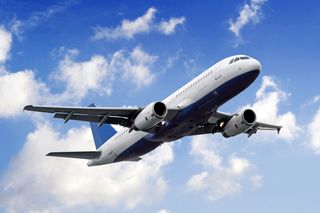Big data: taking to the air
When it comes to big data, we should take our lead from the world of aviation, according to Stephen Pritchard...

Inside the Enterprise: These days, the glamour of air travel is often marred by cramped seats, lost bags and delayed flights.
Especially at busy times, airlines are struggling to stay on top of a vast and complex logistical web. One minor fault with an aircraft can cause a domino effect of delays, and a crowd of unhappy passengers. And even well-run airports can hit unexpected spikes in demand, as recent baggage handling delays at Gatwick show.
But airlines are trying to improve their performance, not least because happier passengers are also more profitable passengers. And increasingly, data is the tool they are turning too.
As Matt Richards, a managing director and aviation specialist at the consulting firm KPMG, points out, airlines have always collected large amounts of data, for example through ticket sales. But these data are now being supplemented by even larger volumes of information, from the aircraft themselves.
The idea of an "instrumented aircraft" is not entirely new. What has changed is the volume of data an airline can access from the aircraft and engines, and the ability to access more of that information during the flight, and process it quickly back on the ground.
A move to real-time information helps airlines, and their maintenance providers, spot potential problems quickly. This improves safety, of course, but it also allows airlines to schedule maintenance in a way that minimises lost aircraft flight hours, and to reduce delays at the gate caused by a plane "going technical".
Aviation, too, presents a significant opportunity for IT companies and firms involved more widely in the Internet of Things. GE, the industrial conglomerate which is one of the world's leading aircraft engine makers, is also a significant provider of data analytics services in its own right.
Get the ITPro. daily newsletter
Receive our latest news, industry updates, featured resources and more. Sign up today to receive our FREE report on AI cyber crime & security - newly updated for 2024.
At the recent Farnborough International Airshow, software companies jostled for space with airframe makers and defence suppliers: SAP had a significant presence at the show, based, according to its senior vice president Nils Herzberg, around its data analytics offering.
One area where IT can help aviation, Herzberg says, is not just by gathering more information from the aircraft themselves, but through faster analytics of the data, and combining that with other information sources, such as data on passenger volumes, or even the weather. This allows airlines to create a more accurate operational plan, and to react more quickly if the plan needs to change.
Big data takes off: FIA 2014 from Stephen Pritchard on Vimeo.
But perhaps the most interesting application for big data is in defence. Civil aviation is enjoying a renewed period of growth, but defence spending remains squeezed by public sector spending constraints. This is forcing defence ministries to keep control of both equipment and operating budgets, and maximise the use of expensive assets such as fighter jets.
In the UK, for example, BAE Systems manages the maintenance for the RAF's Typhoon fleet, and has to meet strict criteria for aircraft availability. The company's engineers rely on data, including real-time data, to do this. And, as the company's Chris Payne points out, there are too much data from a modern combat jet for one person, or even a team, to analyse. Managing the data and managing the aircraft - is something that would be impossible, without IT.
Stephen Pritchard is a contributing editor at IT Pro.




